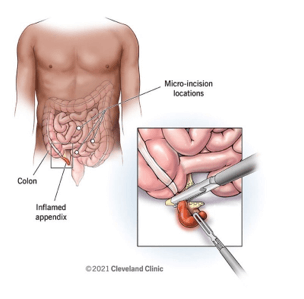A child who weighs 55 pounds receives a prescription for cefotaxime 150 mg/kg/day intravenously in divided doses every 6 hours.
How many mg should the nurse administer each day?
3000 mg.
3300 mg.
3600 mg.
3750 mg.
The Correct Answer is D
Step 1 is to convert the child’s weight from pounds to kilograms since the dosage is prescribed in mg/kg. We know that 1 kg is approximately 2.2 lbs. So, the child’s weight in kg is 55 lbs ÷ 2.2 = 25 kg (rounded to the nearest whole number for simplicity).
Step 2 is to calculate the total daily dosage. The prescription is for 150 mg/kg/day. So, the total daily dosage is 150 mg/kg/day × 25 kg = 3750 mg/day.
So, the correct answer is, after analysing all choices, the nurse should administer 3750 mg of cefotaxime each day.
Nursing Test Bank
Naxlex Comprehensive Predictor Exams
Related Questions
Correct Answer is D
Explanation
An 18-year-old client with a mild mental disability is a client who has a lower than average intellectual functioning and some limitations in adaptive skills, such as communication, socialization, and self-care. A mild mental disability may affect the client's ability to understand, cope, or cooperate with medical interventions, such as ambulation after surgery.
Ambulation is the act of walking or moving around. It is an important part of postoperative care, as it helps to prevent complications such as deep vein thrombosis, pulmonary embolism, pneumonia, atelectasis, constipation, and pressure ulcers. Ambulation also promotes circulation, wound healing, and muscle strength.
When the practical nurse (PN) atempts to assist the client to ambulate on the first postoperative day after an appendectomy, the client becomes angry and says, "PN, 'Get out of here! I'll get up when I'm ready!" This may indicate that the client is experiencing pain, fear, anxiety, or frustration due to the surgery and the recovery process .
The best response for the PN to make is to acknowledge the client's feelings, provide reassurance and support, and set a clear and realistic goal for ambulation. This will help to establish rapport, reduce resistance, and motivate the client to participate in the care plan.
Therefore, option D is the correct answer, as it shows empathy and respect for the client's feelings, while also informing the client of the expectation and time frame for ambulation. Option D also allows the client some time to prepare mentally and physically for the activity.

Correct Answer is ["A","C","D","E"]
Explanation
Choice A rationale:
Monitoring ETT markings between 22 and 26 cm at the teeth line is essential to ensure proper placement of the endotracheal tube (ETT). This helps confirm that the ETT is positioned correctly in the trachea.
Choice B rationale:
Checking for capillary refill is not a reliable method for verifying the placement of an ETT. It is more indicative of peripheral circulation and not related to airway management.
Choice C rationale:
Obtaining a portable chest x-ray is a crucial step to verify the exact placement of the ETT within the trachea and to rule out potential complications such as pneumothorax.
Choice D rationale:
Assessing for symmetrical chest movement is important because unequal chest rise and fall could indicate an issue with ETT placement or lung function.
Choice E rationale:
Auscultating for bilateral breath sounds is another method to confirm that the ETT is correctly positioned in the trachea and that both lungs are being ventilated adequately.
Whether you are a student looking to ace your exams or a practicing nurse seeking to enhance your expertise , our nursing education contents will empower you with the confidence and competence to make a difference in the lives of patients and become a respected leader in the healthcare field.
Visit Naxlex, invest in your future and unlock endless possibilities with our unparalleled nursing education contents today
Report Wrong Answer on the Current Question
Do you disagree with the answer? If yes, what is your expected answer? Explain.
Kindly be descriptive with the issue you are facing.
